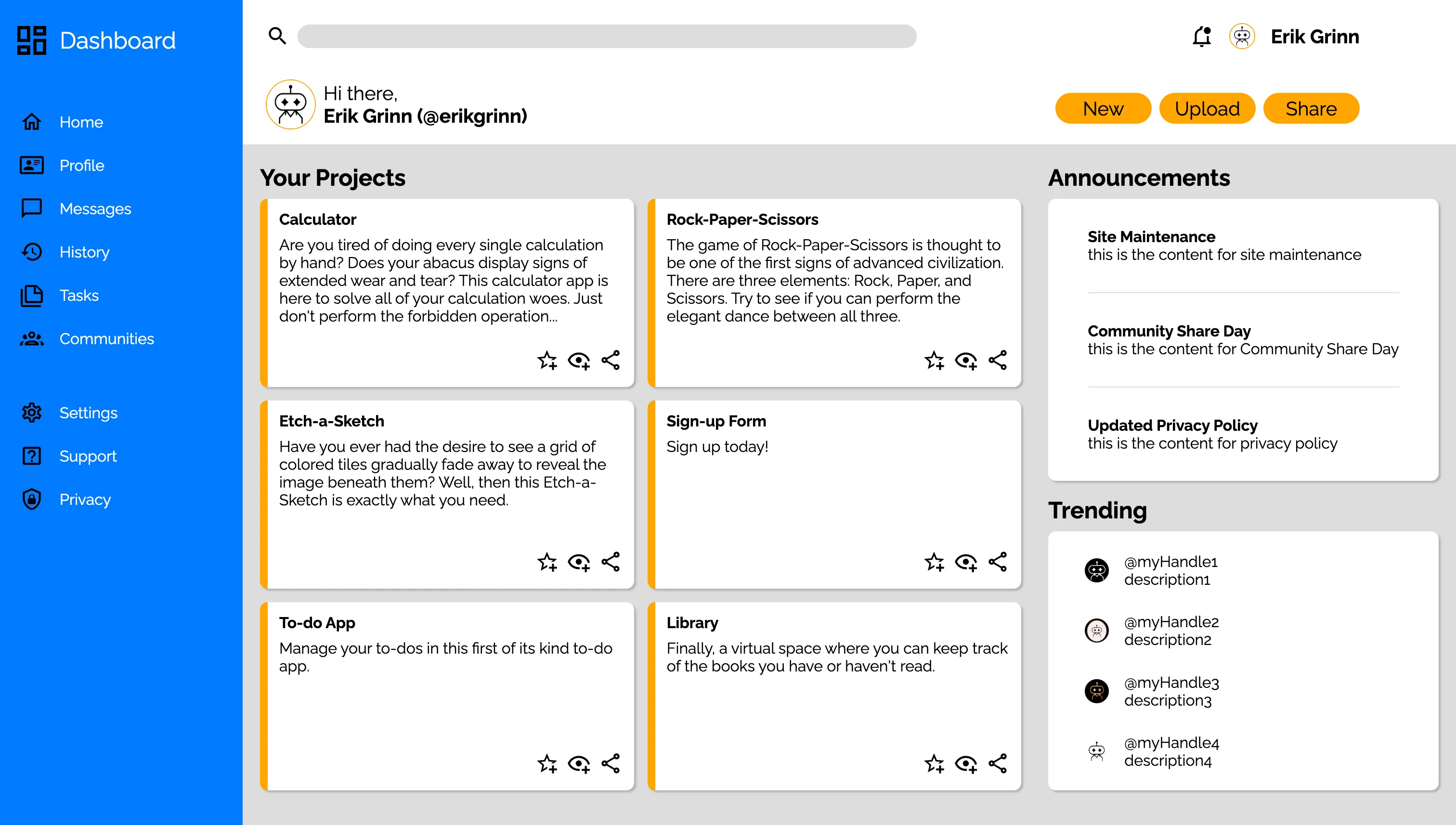Dashboard
 admin-dashboard
admin-dashboard
Practice with CSS grid, as opposed to main use of flex up to now. Both are great tools, and this was a good example of how grid can be beneficial when the layout is known in advance.
Key Coding Concepts
HTML
- Semantic HTML: The project uses semantic HTML tags like
<header>,<div>, and<ul>to structure the content meaningfully. - External Resources: The project links external CSS and JavaScript files using
<link>and<script>tags.
CSS
- Grid Layout: The project uses CSS Grid Layout to create a responsive and flexible layout for the dashboard.
- Flexbox: Flexbox is used for aligning items within containers, such as in the
.search,.profile, and.buttonsclasses. - Custom Fonts: Google Fonts are imported and used to style the text.
- Hover Effects: CSS hover effects are applied to list items and project cards to enhance user interaction.
- Responsive Design: The CSS ensures that the layout adapts to different screen sizes.
Images and Icons
- SVG Icons: Scalable Vector Graphics (SVG) icons are used for various elements like the sidebar and project links.
- PNG Images: PNG images are used for profile pictures and other graphical elements.
Project Structure
- Modular Design: The project is organized into separate files for HTML, CSS, and JavaScript, promoting modularity and maintainability.
- File Organization: Icons and images are stored in a dedicated
iconsdirectory, keeping the project directory clean and organized.
Accessibility
- Alt Attributes: Images and icons include
altattributes to improve accessibility for screen readers. - Keyboard Navigation: The project ensures that interactive elements are accessible via keyboard navigation.
Performance
- Optimized Images: Using SVG icons and optimized PNG images helps in reducing the load time and improving performance.
These concepts collectively contribute to creating a well-structured, maintainable, and user-friendly admin dashboard.